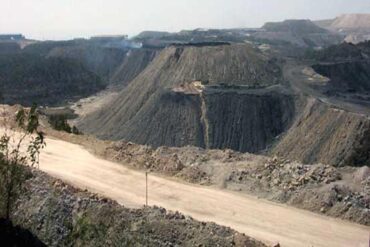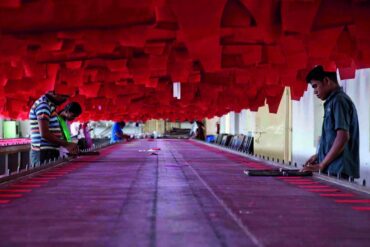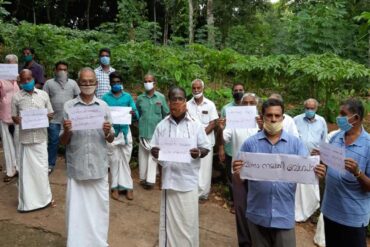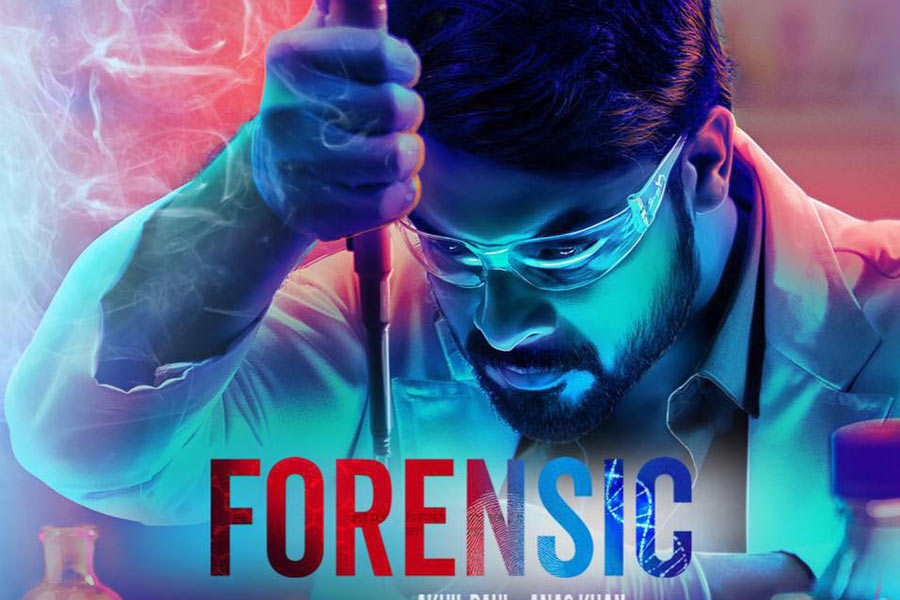Growing up in the West, we take 9–1–1 service for granted — pick up the phone, dial 3 numbers, and an ambulance comes to help you.
In most of the world, you’re on your own in an emergency.
As global social entrepreneur Shaffi Mather points out, 5 billion people have no emergency response services whatsoever. Another 1.25 billion make do with inadequate services. Only 750 million, mostly in North America and Western Europe, can actually rely on prompt ambulance service.
In 2004, Mather founded Ziqitza — bringing ambulances to Mumbai, India. The company has since grown into the largest ambulance company in the developing world, running more than 1,200 ambulances in India and the United Arab Emirates.
Later this month, he and his team will be launching MUrgency: one global response network. MUrgency has the potential to democratize emergency response in the developing world, Mather says.
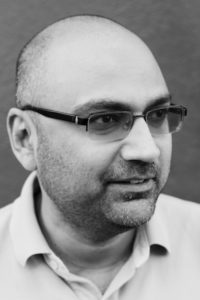
I caught up with Mather in San Francisco before he headed off to Switzerland for the Davos World Economic Forum. We talked emergency response, global corruption, and TED.
How did you first get into the emergency response business?
Twelve years back, my mom choked in her sleep, when I was working with the largest industrialist in India. My father and I had to rush her to the hospital in the back of the car. By God’s grace, she survived, but she was in ICU for a few days.
Sitting outside, I started wondering why there was no emergency ambulance service in India.
This question led to several other questions and the search for the solution took me to London and New York (London Ambulance Service and New York Presbyterian EMS), learning about ambulance services.
Based on my learnings I put together a business plan of setting up an ambulance service in Mumbai, and — with four other friends — started it in 2004.
That company has now grown to be the developing world’s largest ambulance company, running around 1,280-plus ambulances in India and 10 ambulances in UAE. It’s growing well. It has had two rounds of fundraising — one from a leading social venture fund: Acumen, and the other led by the world’s largest emergency care company: Envision Health Care, the parent of American Medical Response, AMR, the U.S.’s largest ambulance company.
What motivated you to explore new models for emergency response?
One thing I realized over the last 2 years while continuing with this ambulance project and developing it beyond India is that 5 billion people on planet earth do not have emergency response of any kind. 1.25 billion have sketchy response. Only 750 million have reasonably reliable response, and that is pretty much covering the U.S., Canada, Western Europe, Japan, Australia/New Zealand and a few urban cities spread around.
If you actually look at how this can be made available to the global population at large, it’s going to require tens of billions of dollars and 20, 30 years before it can be rolled out. That’s just being realistic. Even if you look at Millennium development goals, where the world got together to focus on a set of goals — we have not been able to be fully successful. Even if the world were to focus all its attention, it’s going to take time.
That led to the question: what can we do to make lower-cost, fast, efficient, and effective emergency response available around the world?
The answer to that was: Use the power of mobile networks.
On the supply side, we aggregate existing emergency services — ambulances, doctors, ERs, nurses, EMTs, paramedics, first-aid assistants, Red Cross volunteers, community health workers — on the platform

On the demand side, you as the user have a one-button press on your mobile phone. It searches for the nearest emergency responder, and connects the nearest emergency responder to you.
We are positioning it as, ‘MUrgency — one global response network.’
It’s pronounced “em-urgency.”
How is MUrgency different from the ambulance business you’ve been running for the last 10 years?
The ambulance service we run ourselves. We employ staff, we have direct control over the ambulance operations either by owning or leasing. We do the training, everything.
In this case, we are only aggregating the providers, validating their credentials, and connecting them to people in an emergency. So it’s kind of an Uber/Sidecar/Lyft. They aggregate taxis and make a taxi available for someone who needs to go from point A to point B.
Here, we aggregate emergency responders and make the responders available to anyone in an emergency.
Can this model work for emergency response?
We have done a few small pilots to see how it can work. In a focused area where there is a sufficient number of emergency responders available online, and people call, it definitely works.
We have done the proof of concept but obviously, the best proof of the pudding is in eating it. We are hoping to launch it by end January.
Where will you be launching it?
The app itself will be globally available on iOS and android. While the app will have several features, the emergency response part of it will be rolled out region by region.
We are hoping we can launch Bay Area, London, Dubai and Indian state of Punjab by the first quarter of 2015.
What kind of interest have you gotten in this project?
We have got serious interest. We have partnered at the global level with Business Call to Action @ UNDP — United Nations Development Program. We are partnering with Stanford ChangeLabs, Harvard Asia Center, and MIT Global Health as academic partners.
We have raised from the founders and a set of seed investors a commitment of a million dollars. There is sufficient interest to get it on the ground.
What sort of team have you put together?
We now have an 11-member team. We have two lead tech advisors based in the Bay Area, both are University of Cambridge CS graduates with outstanding resumes. We also have a seven-member coding team in Dubai, who are actually doing the coding work based on the architecture we have agreed on. There are two others who work with me on admin and marketing.
With both the ambulance service and MUrgency, you are directly helping people who are in dire straits. Do you ever reflect on that? How does it feel?
In 2014, we delivered 8,300-plus babies inside the ambulances, so every transport that we do, every intervention that we do is a matter of joy.
But what has hit me over the last two years is that 10 years of work, while it has helped so many people, a lot remains to be done. Five billion still go without, as I said. As important as a helping hand or a holding hand, when one’s life is at stake, we have yet to really make it available.
It also pains that, when you go deeper into this, the value of life unfortunately doesn’t remain the same across societies.
Something like: while we believe that all lives are equal, some lives get attended to more?
One of the objectives of this platform is to democratize and bring universal access to emergency response.
In the short term, it’s not going to be possible to provide the same response across societies. Just for example, a response in California might be by a credentialed EMT or paramedic where a response in Syria might be a humanitarian worker or an individual offering a helping hand.
But our one-point focus is to make sure that there is a helping hand for every emergency happening in the mobile-network-coverage-area in the world.
That’s a very powerful idea: giving people a helping hand when they need it most. In the developing world, you can’t take that for granted.
It is testimony to the power of the mobile phone in today’s world. Ninety-five percent of the world population today lives in a area under mobile network coverage and the world is excepted to have close to 5 or 6 billion mobile phones. The data plans are becoming cheaper by the day, which makes such a technology platform and its end-use possible.
Your TED talk is quite inspiring. What’s it like to give a TED talk?
TED is a great forum to put your ideas out there. I’ve got a lot of support for that idea [a service people can use to fight corrupt officials]. People do connect with me off and on about it. I was nervous on the stage, when I started. The best thing about the TED talk is that it’s like an elevator pitch, in a different sense. You have to compress your idea into the time band that you have been given, so that extent it clarifies your idea very much.
An emergency involving your mother inspired you start an ambulance company. In your TED talk, you mentioned the case of an elderly woman who wanted to add three steps to her home, to make it more accessible from ground level. She was blocked by corrupt bureaucrats, looking for a bribe.
Many people might become depressed or cynical after witnessing events like these. How do you channel these experiences into positive change?
If you remember at that point in time, while it did hit me, I didn’t give it too much thought at that point in my life.
There was a directional change in my life sometime in 2004 after my mother went through the emergency situation. Now I feel very very strongly about [corruption].
I have experienced it first-hand with my colleagues in the ambulance service, and building it out.
In countries like India, you are subjected to trauma on a daily basis from bureaucrats from the lowest level to the highest level who wield extraordinary amounts of power.
They get away with impunity because there’s nothing in the system which can hold them accountable or responsible.
It is sad, but I’m optimistic that times will change. Even in a country like India, there has been a huge change in how the new generation of youngsters approach this. They are not willing to subject themselves to such extortionist attempts.
When someone forces you to pay a bribe, it hurts your dignity. They’re taking advantage of you. They’re basically stealing from you.
It’s even worse than that. As an organization or as an individual, you would have planned a certain strategy or series of steps in doing a project or taking an action and suddenly someone is putting a damocles sword over your head.
It’s a tough call, right? Lives are dependent on you, jobs are dependent on you. It’s a tough call. I know how hard it is because I’ve personally been a target of some of these attempts.
You’ve mentioned to me various roadblocks put up in front of the ambulance business by corrupt officials in India. Can you share a particularly egregious example?
I can cite X number of examples… When we launched this service, India did not have this emergency service. We went to the authorities to get a number like 9–1–1 or a triple-9 or a 1–1–2, which is easy to remember for a service like this.
We were asked for a bribe of $4,000 by the person in charge. We refused to pay it. It just dragged on, and dragged on, and dragged on, and the correspondence had grown and our visits to the offices had grown.
Finally, after intervention by a very respected minister-politician who believed in the project and the cause, we were given the number.
Even at that moment, the officers gave a number — 1–2–9–8 — thinking it’s a hard-to-remember number, instead of giving an easy number. That’s an example of how difficult life can be in pursuing a project.
Why is social capitalism such a powerful force? You’re wielding it like a club, to beat down some of these global problems.
The reality is that the world is not equal to all individuals in several respects. While I do appreciate the spirit of capitalism for human progress, if it is pure-play capitalism, I believe it may be a heartless play, where the disadvantaged and those without equal access do not get fruits of the progress that comes out of capitalism.
Whereas in social-venture capitalism, while profit is a motive and progress happens in the spirit of capitalism, there is a heart and everything that flows from it.
In one sentence: profit is good, profiteering is bad. That kind of sums up what I believe is the rule to play by.
Shaffi Mather’s photographs are by Linda Hanses, a Berlin-based photographer currently living in San Francisco.

